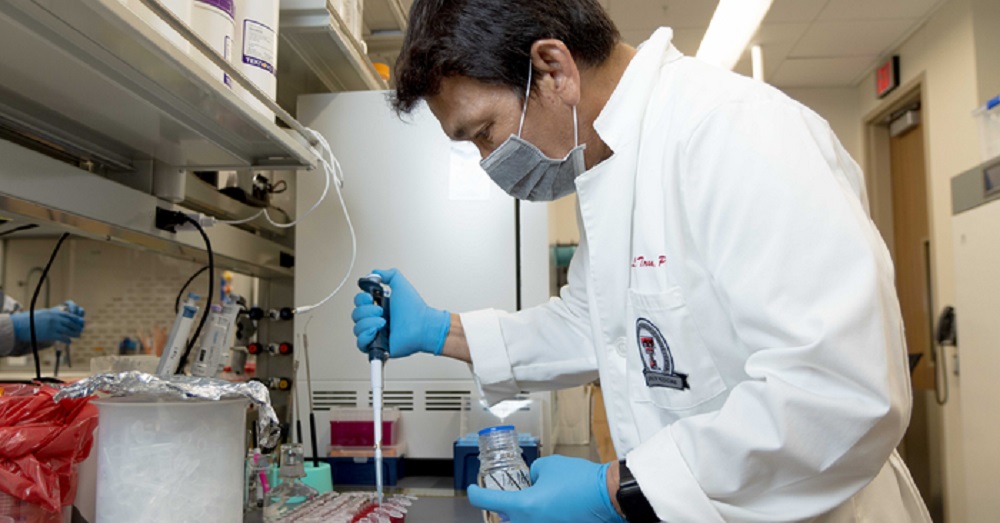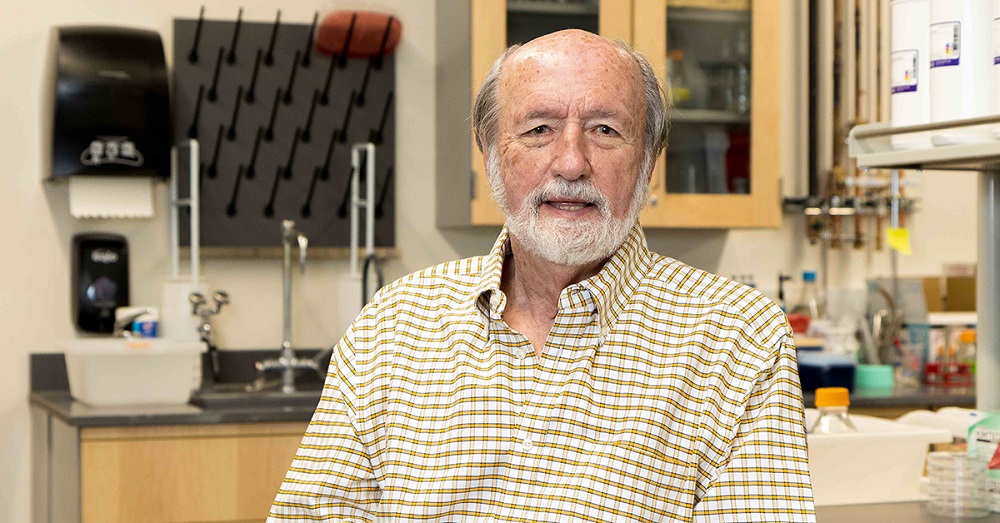Company Owned by TTUHSC Researchers Named to Regional Incubator Program

Phat Tran, Ph.D.
In an important step toward commercialization, a company co-owned by Texas Tech University Health Sciences Center (TTUHSC) researchers Ted Reid, Ph.D., vice chairman for the School of Medicine’s Department of Ophthalmology and Visual Sciences, and Phat Tran, Ph.D., a research instructor in the same department, has been accepted into the 2023 REACH (Regional Energy Accelerator for Commercializing Hard-Tech) incubator program.
The REACH Energy Accelerator is a grant program funded through the U.S. Department of Energy’s Office of Technology Transitions. The program provides participants with 12 months of cost-free, hard tech-based business support services such as consulting, prototyping, testing, techno-economic analysis support and market research to startup companies located throughout mid-America. REACH is further supported through Breakthrough Energy’s Fellows Ecosystem Grant Awards and is powered by the Colorado State University Energy Institute, Innosphere Ventures, the Colorado Energy Research Collaborator and 20 university partners and referring institutions.
Reid’s and Tran’s company, New American Fabric (NAF), combines innovative selenium chemistry with standard chemical moieties used in the textile industry to attach compounds to cellulose-based fibers in a patent-protected approach that results in economical antimicrobial textiles. Moieties are groups of specificatoms responsible for creating certain chemical reactions within a molecule.
Other members of the NAF team include Noureddine Abidi, Ph.D., endowed professor of biopolymers for the Texas Tech University (TTU) Department of Plant and Soil Science and director for TTU’s Biopolymer Research Institute; and Nicholas Bergfeld, M.D., an award-winning start-up coach who has mentored four National Science Foundation I-corps national teams.

Ted Reid, Ph.D.
Reid, who specializes in selenium research, said NAF sought to investigate the viability of attaching a selenium-based compound to cotton to produce an antimicrobial fabric. They began by experimenting with different compounds to see how well they would attach to the glucose atoms within the cotton’s cellulose, which is basically a long string of sugar molecules. One of the compounds that worked includes a chemical component used for wrinkle resistance. NAF modified the compound by adding a selenium atom.
“We went through different methods to try to attach that to the cotton — and it does that very well — but getting it to survive many washes in a washing machine is, of course, one of the things we wanted it to do,” Reid explained. “It does a little bit, but not as well as we would like, so we're now in the process of trying a second compound which uses a different chemistry to attach to the glucose, and we have reason to believe that it’s going to stay attached quite well.”
Binding their antimicrobial compound to fabric would provide benefits to patients of certain diseases such as diabetes. Reid said a serious issue for diabetics is that the extra glucose in their bloodstream is taken in by nerve endings, such as those in the feet, and then is prevented from exiting by an enzyme in the nerve endings that changes the glucose into an alcohol known as a polyol. The nerves then start to wither because of the building up in the nerve endings, which causes diabetics to develop peripheral neuropathies in their feet. This also can occur in the fingers.
“The important thing is the nerves actually produce a compound that helps wound healing, and it's needed for the epithelium (a thin layer of outer skin tissue) to resurface a wound,” Reid said. “So if a diabetic who has peripheral neuropathy gets a crack in their skin and it dries out, or if they otherwise damage their foot, this compound is not present to re-epithelialize (resurface) the wound. Therefore the wound stays open and, ultimately, they have to amputate the foot, or sometimes even the leg. The same thing is true for fingers.”
The life expectancy for a diabetic if they have to amputate a foot is five years, but Reid said socks treated with the compound developed by NAF through TTUHSC would block bacterial growth produced by sweat or injuries to the foot and protect diabetics from getting these infections. The socks also could be used for other conditions such as athlete’s foot.
In addition to using this technology on socks and other clothing, Reid said there are other important uses for this technology such as bandages and feminine hygiene products. Both would be especially beneficial to third world countries.
The bandages could be wrapped around a wound or a sore, removed periodically for washing and then reapplied to the wound because the antimicrobial properties remain intact. For feminine hygiene products, the use of which can lead to fungal infections, Reid, Tran and NAF have demonstrated their compound can block fungi before it has an opportunity to cause infection.
“The big problem is not so much that fungi are initially damaging the skin or the tissue, but it grows on the feminine hygiene product and then releases toxins, which damage cells and allow the fungus to grow on the damaged tissue,” Reid described. “What we’ve shown is that fungi just cannot bind to this stuff. Feminine hygiene products are a $34 billion industry right now, and we think we can make them a premier product because the selenium will block the ability of these fungal infections to form. We think our compound will be a product that will make their feminine hygiene products ideal.”
NAF doesn’t intend to manufacture any of the proposed products itself. Reid said they are looking for large companies such as Johnson & Johnson or Proctor and Gamble that already make these products.
“We can't make those products, and we can't compete with them sales-wise,” Reid reasoned. “We're going to either license or partner with them to do this, and that sort of makes us unique. What REACH is doing is looking for people that we can contact in those companies and talk with them about our product.”
Once a partner or licensee is identified, Reid said it shouldn’t take long for products treated with the NAF compound to enter the market.
“It's not difficult; once we can show them how to use this compound, I would say it should be easily available,” Reid said. “We don't look at this as far in the future. This is something that should be happening pretty soon; I would guess within a year or year-and-a-half.”
Related Stories
TTUHSC Cancer Researcher Honored by National Academy of Inventors
C. Patrick Reynolds, M.D., Ph.D., director of the School of Medicine Pediatric Cancer Research Center at TTUHSC, has dedicated his life as a researcher to developing treatments for childhood cancers.
TTUHSC’s Hudson Set to Serve as President for Society of Clinical Research Associates
The Society of Clinical Research Associates (SOCRA) has elected Texas Tech University Health Sciences Center’s (TTUHSC) Catherine Hudson, Dr.P.H., as its president for 2025-2026.
Clinical Research Institute a Source of Pride for Retiring Griswold
Upon his retirement, John Griswold, M.D., reflects on the Clinical Research Institute and what it has achieved.
Recent Stories
TTUHSC Cancer Researcher Honored by National Academy of Inventors
C. Patrick Reynolds, M.D., Ph.D., director of the School of Medicine Pediatric Cancer Research Center at TTUHSC, has dedicated his life as a researcher to developing treatments for childhood cancers.
TTUHSC School of Nursing Celebrates 10 Years of the Veteran to BSN Program
The TTUHSC School of Nursing recognized the 10-year anniversary of the Veteran to Bachelor of Science in Nursing (VBSN) program during the fall 2025 commencement ceremonies held Dec. 13 in Lubbock, Texas.
TTUHSC Dean to be Inducted into the National Academies of Practice as Distinguished Fellow
Gerard E. Carrino, Ph.D., MPH, dean of the TTUHSC Julia Jones Matthews School of Population and Public Health, will be inducted into the National Academies of Practice (NAP) as a Distinguished Fellow of the Public Health Academy.
